Komentáře / Otázky (24)
![]() Linda DelGrande napsala:
Linda DelGrande napsala:
Is there a pattern available for the Herren pullover? Not the shawl neck sweater that the link takes you to.
03.02.2025 - 19:24Odpověď DROPS Design :
Dear Mrs DelGrande, this might not have been one of our patterns, this project has been removed as link was broken. Please find all jumpers for men here - add filters to affine your search. Happy knitting!
04.02.2025 - 15:12
![]() Stefania napsala:
Stefania napsala:
Buongiorno, quanto filato serve per fare questa maglia in tinta unita in tg.M? Grazie
13.11.2023 - 08:27Odpověď DROPS Design :
Buonasera Stefania, per un aiuto così personalizzato può rivolgersi al suo rivenditore DROPS di fiducia. Buon lavoro!
16.11.2023 - 20:49
![]() Guillermo napsala:
Guillermo napsala:
Qué tal! Los números en el esquema de la prenda, ¿son centímetros? Muchas gracias
14.05.2022 - 06:16Odpověď DROPS Design :
Hola Guillermo, sí, las medidas son centímetros.
15.05.2022 - 23:56
![]() Sebastian napsala:
Sebastian napsala:
I have noticed that the Ocelot sweater sleeve cap is not aligning sleeves are too big and I'm knitting a small. Sleeves are buckling when trying to seam in the in set sleeves. Are there any tutorial to assist
12.05.2022 - 19:25Odpověď DROPS Design :
Dear Sebastian, if you kept the correct tension for the sleeves, they should nicely fit in the armhole; this video might help you, you can first baste the sleeve if it helps. Happy knitting!
13.05.2022 - 08:07
![]() Kathrin napsala:
Kathrin napsala:
Frage bzgl Ocelot Pullover, Abschnitt Rücken, da heißt es für Gr XL: "Nach 68 cm die mittleren 23 M. für den Halsausschnitt abk. Weiter bei der nächsten R. 1 M. gegen den Halsausschnitt abk. = 23 M. Nach 70 cm abk. " Was heißt hier 1M gegen den Ausschnitt abketten? 23x 1M jeweils auf der Halsseite abketten? Dann wären das aber 23 eihen und entspricht nicht 2cm bis Ende der Rückenarbeit. ich verstehe hier die Anleitung nicht. Kann mit hier jmd helfen?
29.03.2022 - 20:44Odpověď DROPS Design :
Liebe Kathrin, in XL werden Sie die 23 Maschen für den Halsausschnitt bei einer Länge von 70 cm (68 cm in L); dann ketten Sie 1 Masche am Anfang der nächsten Reihe ab Hals (= Rückreihe bei der rechten Schulter/Hinreihe bei der linken Schulter). Viel Spaß beim stricken!
30.03.2022 - 07:37
![]() BritishKoala napsala:
BritishKoala napsala:
Hi, I'm confused on the measurements given for which size. How do you work it out for the pattern? As in measuring it the person in relation to the numbers in the diagram. Thank you
19.06.2020 - 21:56Odpověď DROPS Design :
Dear BritishKoala, rather measure a similar garment he has and likes the shape to compare them in those in the measurement - read more here. Happy knitting!
22.06.2020 - 07:26
![]() Antje Dumrath napsala:
Antje Dumrath napsala:
Ich habe schon viele Ihrer Anleitungen mit Erfolg gestrickt, aber bei dieser Anleitung komme ich mit der Anweisung für den Kragen nicht klar. Wie strickt man 2 Randm? Und folgenden Satz verstehe ich gar nicht: Nach ca. 6 cm in den mittleren 12 li.- Partiene je 1 M. aufnehmen... usw. Für eine zügige Antwort bin ich sehr dankbar. Fröhliche Grüße Antje Dumrath
10.06.2020 - 18:19Odpověď DROPS Design :
Liebe Frau Dumrath, Kragen wird hier in Reihen gestrickt, mit 2 Randmaschen krausrechts (und 2 rechte Maschen) beidseitig. Nach 6 cm werden Sie 1 Maschen in den mittleren 12 linke-Partien (von der Vorderseite gesehen) zunehmen, so daß der Kragen so aussieht: 2 M kraus rechts, Bündchen 2 M re/2 M li (Seite Vorderteil), dann 12 Mal (2 M re, 3 M li) (ca gegen Hals Rückenteil), und dann wieder 2 M re/2 M li (Seite Vorderteil) und 2 M kraus rechts. Viel Spaß beim stricken!
11.06.2020 - 08:15
![]() Nicole napsala:
Nicole napsala:
EN MÊME TEMPS, à 8-8-8-8-10-10 cm de hauteur totale, augmenter 1 m de chaque côté du marqueur milieu sous la manche – tricoter les augmentations en jacquard. Répéter ces augmentations 11-10-12-14-13-15 fois au total tous les 4½-5-4-3-3-2½ = 61-65-69-73-77-81 m. Est-ce au total tous les 41/2 rang ou cm. Merci
23.07.2019 - 19:18Odpověď DROPS Design :
Bonjour Nicole, il s'agit de cm. Bon tricot!
23.07.2019 - 19:30
![]() Mandy Gibbon napsala:
Mandy Gibbon napsala:
Did all that. Sleeve did not fit nicely, it was far too small. I have now followed the length of the sleeve on pattern 'Limestone', i.e. to length 66 cm rather than 62 - finished it last night, and it fits perfectly!!
18.01.2019 - 10:23
![]() Mandy Gibbon napsala:
Mandy Gibbon napsala:
I am knitting the XL size. Following the instructions and the lengths there is no way the sleeve fits the space I have for the armhole there is about 3 ins difference. Tension OK, Length measurements are OK, but the sizing you give is way out. My chest size is 51cm and your diagram says 61. I'm struggling to know what to do as the sleeve just wont fit although the length of the body from armhole to shoulder is exact, I have reknitted decreasing part of sleeve and still nowhere near.
17.01.2019 - 19:03Odpověď DROPS Design :
Dear Mrs Gibbon, in size XL, the armholes should be 23 cm. When all inc in sleeves are done there are 73 sts (= approx. 43 cm), then you continue sleeve cap from 51 cm to 62 cm = 11 cm length casting off sts on each side for sleeve cap as explained in the pattern. Sew first the shoulders, then pin sleeve around the armhole, it should fit nicely. Should do need any further assistance, please show your work to your store - even sending them a picture per Email- they will have a better overview. Happy knitting!
18.01.2019 - 08:29
Ocelot#ocelotsweater |
||||||||||
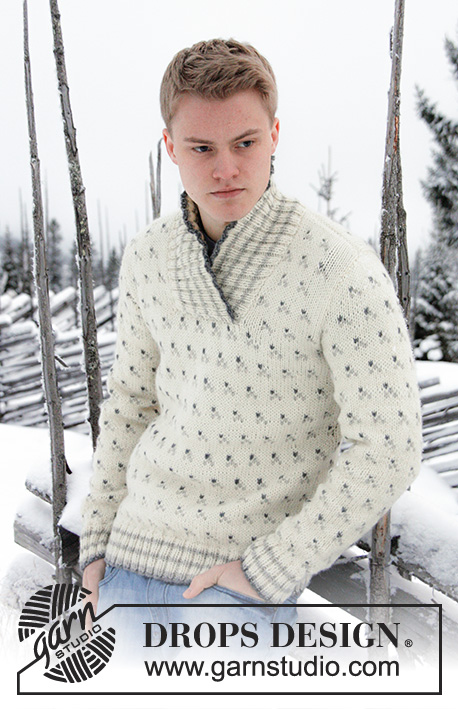 |
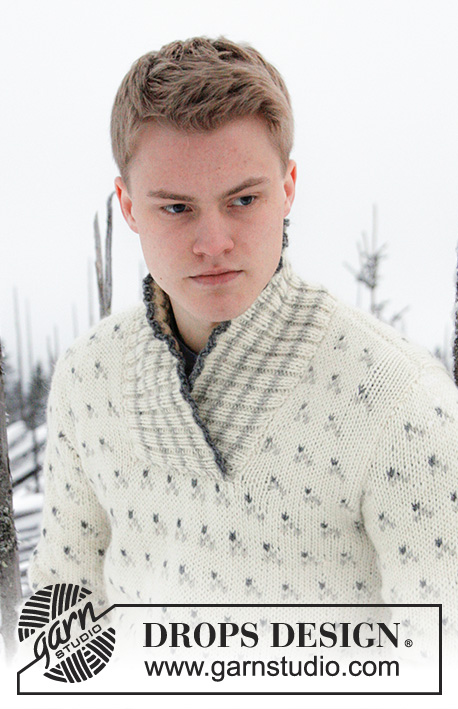 |
|||||||||
Pletený DROPS pánský svetr se vzorem a šálovým límcem z příze „Nepal“. Velikost S – XXXL.
DROPS Extra 0-808 |
||||||||||
|
VZOR: Viz schéma M. 1 až M. 3 – schéma pleteme lícovým žerzejem. ---------------------------------------------------------------------- TĚLO: Pleteme v řadách dokola na kruhové jehlici. Na kruhovou jehlici č. 4 nahodíme přízí Nepal středně šedou barvou 196-212-228-256-272-304 ok. Změníme barvu na světle šedou a pleteme patentem = 2 hladce/2 obrace, podle vzoru M. 1. Po dokončení vzoru M. 1 1x na výšku, změníme velikost kruhové jehlice na č. 5. Upleteme 1 kruhovou řadu přírodní barvou a SOUČASNĚ rovnoměrně ujmeme 46-50-54-58-62-70 ok = 150-162-174-198-210-234 ok. PAMATUJTE NA SPRÁVNÉ NAPĚTÍ PŘÍZE! Ve výšce 15 cm přidáme z každé strany obou značek 1 oko – přidávaná oka pleteme přírodní barvou. Přidávání opakujeme ještě ve výšce 30 cm = 158-170-182-206-218-242 ok. Ve výšce 46-47-48-49-50-51 cm - řady přidáme tak, aby byla nad vzorem upletena nejméně jedna řada přírodní barvou – pleteme následující kruhovou řadu: pro průramek uzavřeme 3 oka, pleteme 24-27-30-36-39-45 ok, pro průkrčník uzavřeme 25 ok, pleteme 24-27-30-36-39-45 ok, pro průramek uzavřeme 6 ok, pleteme 73-79-85-97-103-115 ok (= zadní díl) a poslední 3 oka uzavřeme pro průramek. Díly dokončíme samostatně. ZADNÍ DÍL: = 73-79-85-97-103-115 ok. Pokračujeme vzorem M. 2 – SOUČASNĚ uzavřeme pro průramky na začátku každé řady z každé strany: 0-0-0-0-1-1x 3 oka, 1-1-2-3-3-4x 2 oka 2-2-3-4-4-5x 1 oko = 65-71-71-77-77-83 ok. Ve výšce 64-66-68-70-72-74 cm uzavřeme pro průkrčník středových 23 ok. Náramenice dokončíme odděleně. V následující řadě uzavřeme pro průkrčník 1 oko = 20-23-23-26-26-29 ok zbývá na náramenici. Oka uzavřeme ve výšce 66-68-70-72-74-76 cm. PRAVÝ PŘEDNÍ DÍL: = 24-27-30-36-39-45 ok. Průramky tvarujeme stejně jako na zadním díle = 20-23-23-26-26-29 ok. Oka uzavřeme ve výšce 66-68-70-72-74-76 cm – POZN: oka uzavřeme ve stejné řadě vzoru jako na zadním díle. LEVÝ PŘEDNÍ DÍL: Pleteme stejně jako pravý přední díl – zrcadlově. RUKÁV: Pleteme na krátkých ponožkových jehlicích v řadách dokola. Při větším poču ok převedem práci na kruhovou jehlici. Na ponožkové jehlice č. 4 nahodíme středně šedou barvou 48-52-56-56-60-60 ok. Po upletení vzoru M. 1 1krát na výšku, změníme velikost jehlic na č. 5. Upleteme jednu kruhovou řadu hladce přírodní barvou, SOUČASNĚ rovnoměrně ujmeme 9-7-11-11-9-9 ok = 39-45-45-45-51-51 ok. Značkou označíme začátek řady (= střed spodní strany rukávu) a upleteme vzor M. 2 – POZN. Vzor začíná a končí stejně, souměrně podle středu spodní strany rukávu. SOUČASNĚ ve výšce 8-8-8-8-10-10 cm, přidáme kolem značky 1 oko – přidávaná oka zapracováváme do vzoru. Přidávání opakujeme každých 4½-5-4-3-3-2½ cm celkem 11-10-12-14-13-15krát = 61-65-69-73-77-81 ok. Ve výšce 54-54-53-51-50-48 cm (nižší vzdálenost u větších velikostí odpovídá adekvátním proporcím rukávové hlavice, která je u širšího rukávu delší), uzavřeme kolem značky 6 ok (tj. 3 oka z akždé strany značky). Díl dokončíme v lícových a rubových řadách – SOUČASNĚ tvarujeme rukávovou hlavici – na začátku a na konci každé řady uzavřeme z každé strany 2-2-2-3-3-4krát 2 oka a 3-3-3-4-4-5krát 1 oko. Dále z každé strany uzavřeme 2 oka a to, až do výšky 61 cm. Na závěr uzavřeme z každé strany 1krát 3 oka. Zbylá oka uzavřeme ve výšce 62 cm. DOKONČENÍ: Sešijeme náramenice. ŠÁLOVÝ LÍMEC: Límec začínáme na levé straně předního dílu, na konci uzavřených ok. Na kruhovou jehlici č. 4 nabereme podél levé strany dílu přírodní barvou 34 až 44 ok, ze zadního průkrčníku nabereme 24 až 26 ok a na závěr nabereme podél druhé strany předního dílu 34 až 44 ok = 92 až 114 ok (oka nenabíráme v předním průkrčníku, kde jsou uzavřená oka). Rubovou řadu upleteme hladce a SOUČASNĚ rovnoměrně přidáme oka na celkový počet 126-130-134-138-142-146 ok. Pleteme vzorem M. 3 a následně (lícová řada): 2 krajní oka jsou ve všech řadách pletená hladce, *2 hladce, 2 obrace*, mezi *-* opakujeme, až zbývají 4 oka, řadu končíme 2 oky hladce a 2 krajními oky hladce. Takto pleteme do výšky 6 cm. Uprostřed každého žebra pleteného 12 oky obrace přidáme 1 oko, nahlížíme z lícové strany (= zadní díl průkrčníku) = 138-142-146-150-154-158 ok. Dopleteme vzor M. 3 1krát na výšku, změníme barvu příze na středně šedou a oka VOLNĚ uzavřeme jak se jeví. Límec měří asi 15 cm. Límec přeložíme přes sebe (pravou stranu přes levou), přeložený límec všijeme do průkrčníku. Všijeme rukávy. |
||||||||||
Vysvětlivky ke schématu |
||||||||||
|
||||||||||
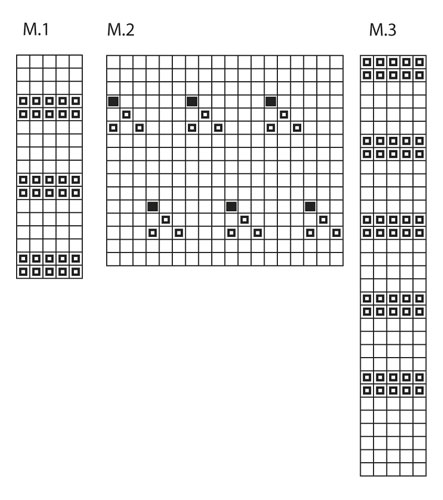
|
||||||||||
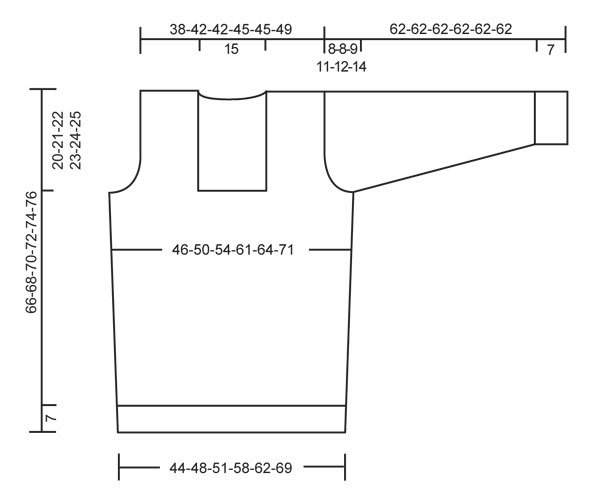
|
||||||||||
Dokončili jste tento model?Pak označte své fotky tagem #dropspattern #ocelotsweater nebo je pošlete do galerie #dropsfan. Potřebujete s tímto návodem poradit?Otevřete-li si návod na stránce garnstudio.com, najdete tam 23 výukových video-ukázek, Komentáře/Dotazy a další užitečné informace. © 1982-2025 DROPS Design A/S. Vyhrazujeme si veškerá práva. Tento dokument, včetně všech jeho dílčích částí, podléhá autorským právům. Podrobnější komentář k možnostem užití našich návodů najdete dole pod každým návodem na našich stránkách. |
||||||||||







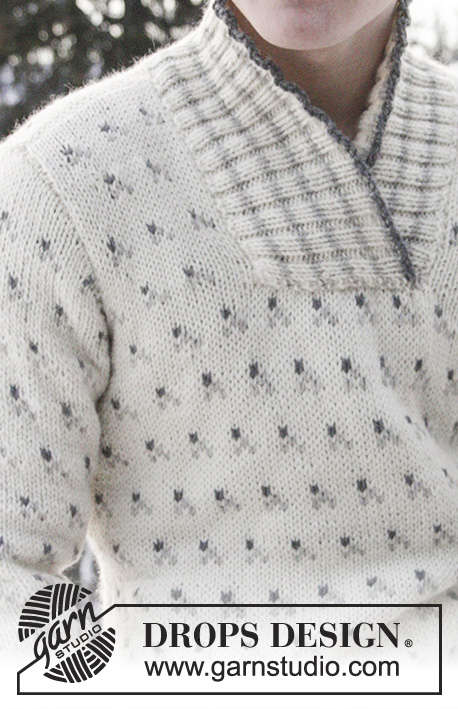
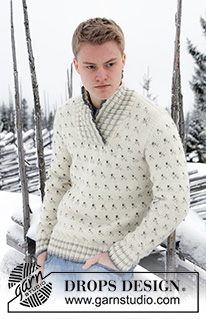
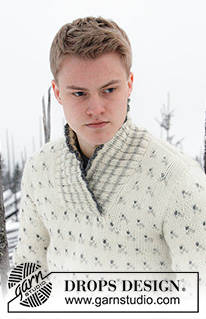





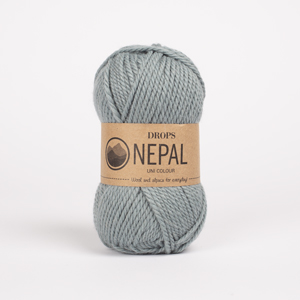
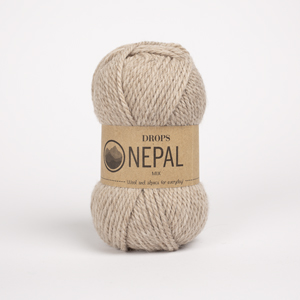
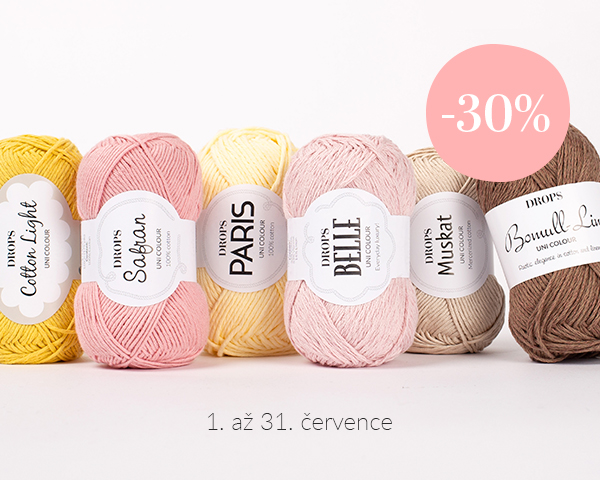










































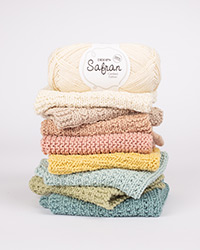
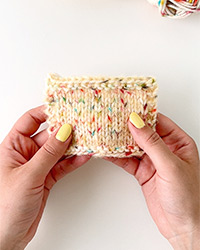
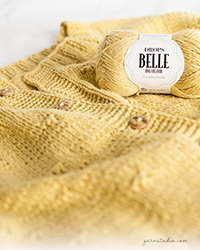
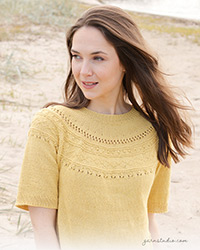
Přidejte komentář k návodu DROPS Extra 0-808
Rádi bychom věděli, co si o tomto modelu myslíte!
Pokud se chcete na něco zeptat, dbejte prosím na to, abyste ve formuláři níže vybrali správnou kategorii - díky tomu se dříve dozvíte, co potřebujete vědět. Povinná pole jsou označena *.